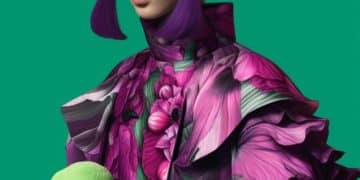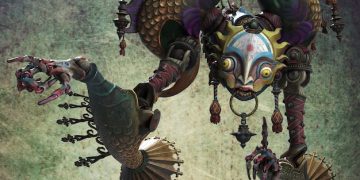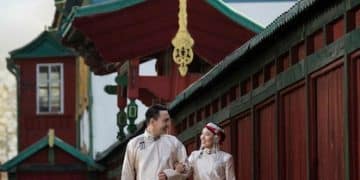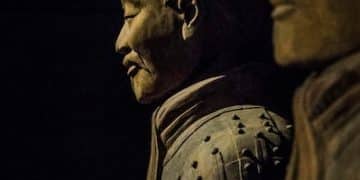Decoding K-Drama Magic: Exploring Common Tropes and Plot Devices
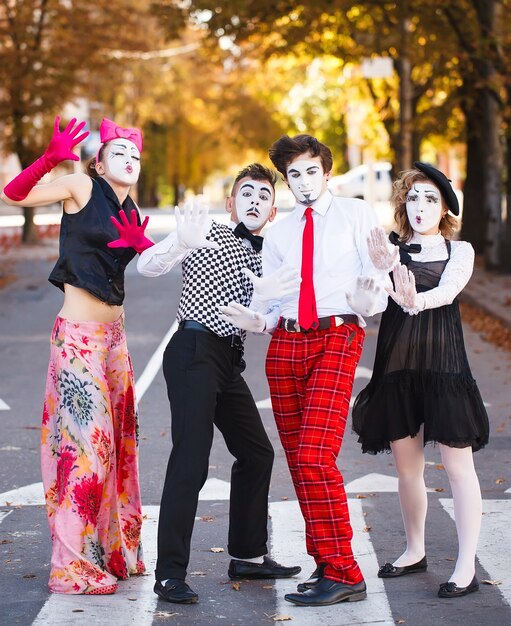
Advertisements
Korean drama tropes encompass recurring themes and plot devices, such as love triangles, amnesia, and class differences, that define the genre and contribute to its global appeal.
Korean dramas, or K-dramas, have captivated audiences worldwide with their compelling stories, charismatic characters, and unique narrative style. A key element that defines the genre is the use of **Korean drama tropes**: recurring themes and plot devices that create familiar yet engaging storylines. Let’s delve into the iconic tropes, understanding their significance and impact on the K-drama experience.
Anúncios
Understanding the Allure of K-Drama Tropes
Korean dramas are characterized by specific, often repeated narrative elements. These aren’t merely clichés but rather integral parts of the storytelling tradition. Understanding why these tropes are so prevalent can unlock a deeper appreciation for the genre.
From comedic misunderstandings to tear-jerking separations, these tropes provide a framework for exploring universal themes of love, loss, family, and ambition. They also offer a comfortable familiarity, allowing viewers to connect with the characters on an emotional level.
Anúncios
The Role of Familiarity and Comfort
One of the reasons why K-drama tropes are so effective is that they offer a sense of familiarity. Viewers often know what to expect, which can be comforting. This predictability allows them to relax and immerse themselves in the story, rather than constantly being surprised by unexpected plot twists.
Cultural Significance
Many K-drama tropes are deeply rooted in Korean culture and values. Understanding these cultural nuances can enhance the viewing experience. For instance, the emphasis on family loyalty and filial piety plays a significant role in many storylines.
- Nunchi: The subtle art of understanding another person’s thoughts and feelings. This often leads to misunderstandings or unspoken feelings in dramas.
- Jeong: A deep emotional connection that binds people together. This can explain the intense loyalty and devotion seen in many relationships.
- Hwa-byung: A cultural-bound syndrome of suppressed anger. Characters often struggle with this, leading to dramatic outbursts or silent suffering.
By understanding the cultural context behind these tropes, viewers can gain a deeper appreciation for the nuances of Korean storytelling.
In conclusion, the allure of K-drama tropes lies in their ability to blend familiarity with emotional depth, offering a unique and engaging viewing experience rooted in Korean culture.
Love Triangles: A K-Drama Staple
The love triangle is arguably one of the most ubiquitous tropes in K-dramas. It often involves the main character being torn between two potential love interests, creating tension and drama that fuels the storyline.
The appeal of the love triangle lies in its ability to evoke strong emotions in viewers. Audiences often find themselves rooting for one character over the other, passionately debating the merits of each romantic pairing.

Common Configurations
Love triangles in K-dramas often follow predictable patterns:
- The “Nice Guy” vs. The “Bad Boy”: The protagonist is often torn between a reliable, kind-hearted suitor and a more enigmatic, brooding character.
- Childhood Friends: A common scenario involves the protagonist having a long-standing friendship with one of the potential love interests, creating a complex dynamic of unspoken feelings and missed opportunities.
- Fate vs. Choice: The protagonist may be drawn to one character due to a sense of destiny, while also feeling a strong connection with another based on shared experiences and personal compatibility.
The Second Lead Syndrome
Often, the “second lead” in a love triangle is a character whom the audience empathizes with deeply, despite knowing they are unlikely to end up with the protagonist. This phenomenon is known as “Second Lead Syndrome,” where viewers develop a strong attachment to the character who ultimately loses out on love.
Love triangles are a central element of K-dramas, adding depth and excitement by playing out the emotional conflicts and audience loyalties to potential couples.
Amnesia: The Plot Twist That Keeps on Giving
Amnesia is a frequently used plot device in K-dramas. It typically involves a character losing their memory due to an accident or trauma. Oftentimes, the amnesia becomes a central conflict.
While some may criticize the overuse of amnesia as cliché, it serves as a powerful tool for exploring themes such as identity, redemption, and the enduring power of love.
Types of Amnesia
Amnesia can manifest in various ways in K-dramas:
- Retrograde Amnesia: The character forgets past events, often including their relationship with the protagonist.
- Anterograde Amnesia: The character is unable to form new memories, leading to repetitive and frustrating situations.
- Dissociative Amnesia: The character forgets specific traumatic events, often as a coping mechanism.
Dramatic Impact
Amnesia can create significant emotional turmoil for both the character suffering from memory loss and those around them. The loss of memory can threaten the bonds of love and connection.
In K-dramas, amnesia serves as a catalyst for growth and change. It forces characters to re-evaluate their priorities, confront their past traumas, and ultimately discover their true selves.
To summarize, amnesia is more than just a plot device; it’s a mirror reflecting the complexities of human relationships and the resilience of the human spirit.
The Rich vs. Poor Trope: A Societal Reflection
The contrast between the wealthy and the impoverished is a recurring theme in K-dramas, often highlighting social inequalities and the challenges faced by those from different socioeconomic backgrounds.
This trope allows K-dramas to explore themes of social mobility, class prejudice, and the pursuit of happiness in a world driven by material wealth.
Conflict and Romance
The “rich vs. poor” trope often leads to romantic entanglements between characters from vastly different social classes. The challenges and obstacles they face highlight class differences.
Despite the challenges, these couples often find common ground through their shared values and emotional connection, demonstrating that love can transcend social barriers.
Social Commentary
The “rich vs. poor” trope can also serve as a form of social commentary, exposing the excesses of the wealthy, the struggles of the working class, and the systemic inequalities that perpetuate poverty.
The stark contrast between the opulent lifestyles of the rich and the everyday struggles of the poor serves as a powerful reminder of the social inequalities that exist in modern society.
The “rich vs. poor” trope reflects the complex dynamics of modern society where economic disparities effect every aspect of human interaction.
The Piggyback Ride: A Symbol of Care and Connection
The piggyback ride is a cute and memorable scene in K-dramas. It depicts a character carrying another on their back. This is a symbol of affection and support.
More than just a charming spectacle, the piggyback ride represents a moment of vulnerability, trust, and emotional connection between characters.

Situations and Contexts
Piggyback rides often occur in specific contexts often related to the characters emotions:
- Intoxication: One character is drunk. The other helps them get home.
- Injury: One character is injured or otherwise unable to walk.
- Emotional Support: One character is emotionally distressed and in need of comfort.
Subtext and Symbolism
The piggyback ride has a deeper meaning that shows characters care for each other.
It also symbolizes trust, as the character being carried is entirely dependent on the other. The piggyback ride can also be a moment of intimacy and connection. The characters are physically close and more open with each other.
Memorable Moments
The piggyback ride is a recurring symbol of care in K-dramas. It reflects tenderness and deeper connection between characters.
In summary, scenes with piggyback rides are very popular. They add a special touch that warms the hearts of the audience.
Sudden Illness: The Emotional Rollercoaster
Sudden illness, especially terminal illness, is a common plot device in K-dramas, often used to heighten the emotional stakes and create dramatic tension.
The sudden illness trope allows K-dramas to explore themes of mortality, acceptance, and the importance of cherishing every moment.
Impact on Relationships
The revelation of a character’s sudden illness can have a profound impact on all those involved.
The fear of loss can bring characters closer together, as they realize the fragility of life and the importance of expressing their love and appreciation for one another.
Redemption and Forgiveness
The faced with the reality of mortality allows characters to resolve old conflicts and seek redemption.
Past grievances may seem less significant in the face of looming death, leading to forgiveness and reconciliation.
In conclusion, the sudden illness trope serves a crucial purpose in bringing out deeper themes in the story.
Transformations and Makeovers: Enhancing External Beauty
Makeovers and transformations are common in K-dramas. They allow characters to change physically and/or emotionally. It typically marks a change in the character’s life.
The transformation trope in K-dramas shows that external change happens along with internal change.
Types of Transformations
Transformations can vary and take on different forms like so:
- Physical Transformation: A change in appearance through make-up or wardrobe.
- Personality Transformation: An internal change in personality, behavior and mindset.
- Social Transformation: A change in social standing, lifestyle or role.
Internal Change
Transformations symbolize the changing attitudes of the characters involved. It shows the shift from how a character was and how they are trying to be now.
These internal change results in a new sense of self.
Transformations and makeovers are a great way to show how characters deal with the changes and challenges that life throws at them.
| Key Element | Brief Description |
|---|---|
| 💔 Love Triangles | Protagonist is torn between two potential love interests. |
| 🧠 Amnesia | Character loses memory, often due to accident or trauma. |
| 💰 Rich vs. Poor | Romance and conflict between characters from different social classes. |
| 🤕 Sudden Illness | Character faces unexpected health crisis, testing relationships. |
Frequently Asked Questions
▼
Love triangles create emotional tension, allowing stories to delve into complex relationship dynamics and spark passionate audience debates over potential pairings. They also provide a structured way to explore themes of choice and destiny.
▼
Amnesia is a plot device to explore themes of identity, redemption, and enduring love. It poses challenges in relationships by altering memories and creating conflict, which leads characters to develop and deepen their connection to each other.
▼
The “rich vs. poor” trope often highlights social inequalities and provides a critique of class prejudices. It also shows how love can prevail despite significant economic differences. It challenges social norms and class discrimination.
▼
Transformations and makeovers often symbolize important internal changes and personal growth. It is also a way of expressing a change in one’s lifestyle to fit in better with society or get closer to their dreams by enhancing appearances.
▼
Sudden illness is a plot device that adds a heightened emotional stake to enhance the connection of the family members. It also symbolizes how short and precious life is in relationships. This allows for redemption or forgiving conflicts.
Conclusion
Korean drama tropes, while sometimes predictable, are integral to the genre’s appeal. They provide a framework for exploring universal themes, creating emotional connections, and reflecting cultural values. Embracing these **Korean drama tropes** allows for richer engagement with the captivating world of K-dramas.

